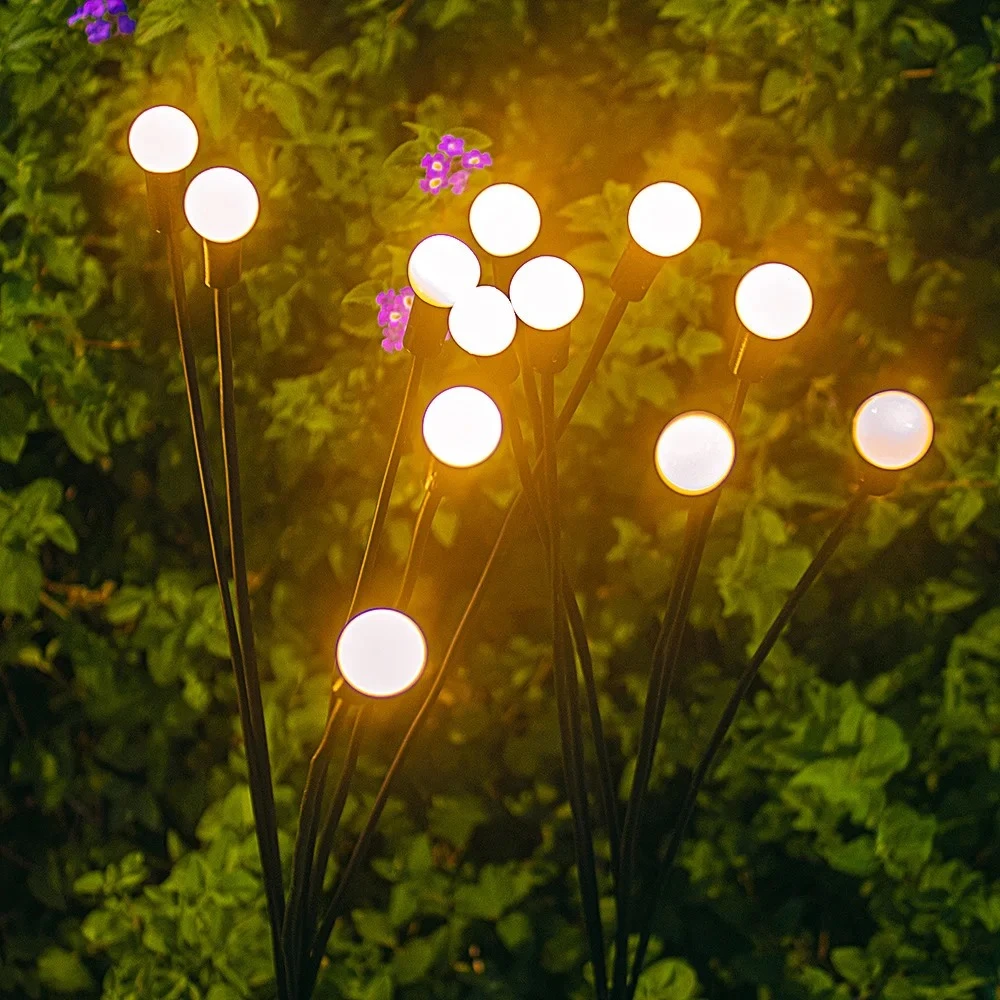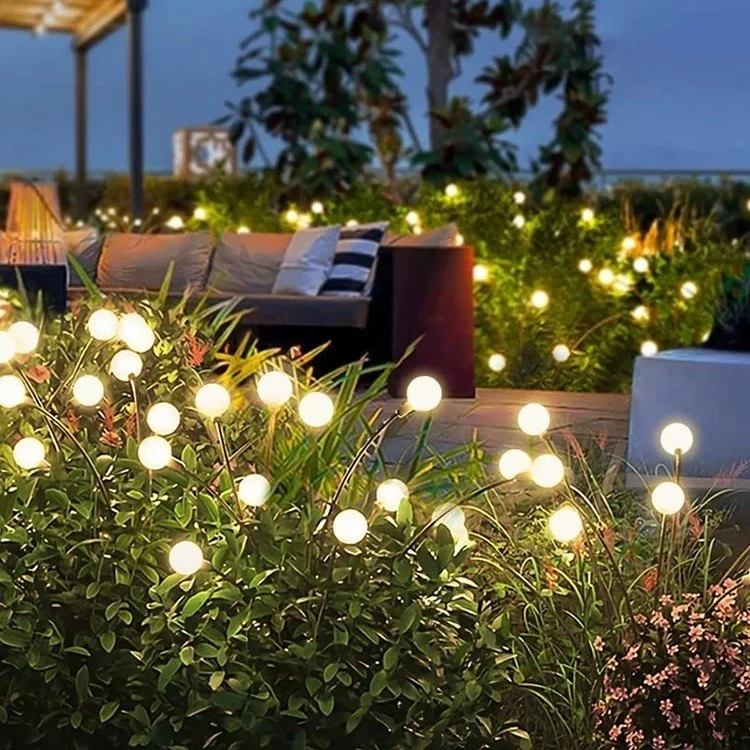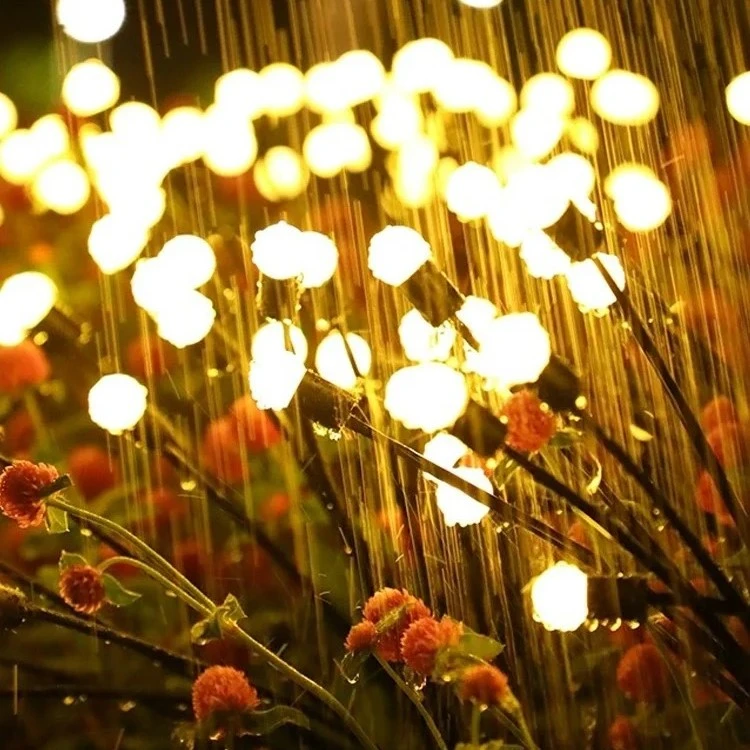In an era where sustainability and budget-consciousness are priorities, solar firefly lights offer a perfect blend of environmental responsibility and economic savings. These twinkling, energy-efficient lights not only enhance outdoor spaces but also reduce carbon footprints and electricity costs. This article explores the environmental benefits, long-term cost advantages, and real-world examples of why solar firefly lights are a smart choice for eco-minded and budget-savvy homeowners.

Environmental Benefits of Solar Firefly Lights
Solar firefly lights are a beacon of sustainability, harnessing renewable energy to illuminate gardens, patios, and pathways. By relying on solar power, these lights significantly reduce environmental impact compared to traditional electric lighting.
Reducing Carbon Footprint
Unlike conventional lights that draw power from fossil fuel-based grids, solar firefly lights operate on clean, renewable energy. A single solar light can prevent approximately 50–100 kg of CO2 emissions annually, depending on local grid energy sources. This reduction is equivalent to planting one or two trees per light, making them a practical step toward combating climate change.
Minimizing Electricity Consumption
Solar lights eliminate the need for grid electricity, conserving energy resources. A typical solar firefly light with a 1W LED consumes zero grid power, relying entirely on sunlight captured by its solar panel. This efficiency is particularly impactful in outdoor settings, where lighting often runs for hours nightly. By choosing eco-friendly lighting, homeowners contribute to lower energy demand and reduced strain on power infrastructure.
Sustainable Design
Most solar firefly lights are built with durable, recyclable materials like stainless steel and weather-resistant plastics. Their long lifespan—often 5–10 years for LEDs and 2–3 years for rechargeable batteries—reduces waste compared to disposable battery-powered or incandescent lights. Additionally, their wireless design eliminates the need for energy-intensive wiring, further enhancing their green credentials.

Cost Analysis: Solar Firefly Lights vs. Traditional Lighting
While solar firefly lights may have a slightly higher upfront cost than traditional lights, their long-term savings make them a cost-effective lighting solution. Below is a detailed comparison highlighting their economic advantages.
Initial Investment
A set of solar firefly lights typically costs $20–$50, depending on the design (string, stake, or cluster) and quality. In contrast, traditional outdoor lights (e.g., plug-in LED or incandescent) range from $15–$40, but require additional expenses for wiring, outlets, or timers, often adding $10–$30 to the total. Solar lights, being wireless, eliminate these installation costs.
Operating Costs
The most significant savings come from electricity bills. A traditional 5W LED outdoor light running 6 hours nightly consumes about 10.8 kWh annually. At an average U.S. electricity rate of $0.16 per kWh, this costs $1.73 per light per year. For a set of 10 lights, that’s $17.30 annually. Solar firefly lights, powered entirely by sunlight, incur $0 in electricity costs, saving $17–$50 yearly for a typical garden setup.
Maintenance and Replacement
Solar firefly lights require minimal maintenance—occasional cleaning of the solar panel and battery replacement every 2–3 years (costing $5–$10 per light). Traditional lights, however, may need frequent bulb replacements (incandescents last ~1,000 hours, LEDs ~25,000 hours) and wiring repairs, costing $5–$20 annually for a set. Over 5 years, solar lights can save $50–$100 in maintenance compared to traditional systems.
Long-Term Savings
Consider a 5-year scenario for 10 lights:
- Traditional Lights: $150 (initial) + $86.50 (electricity) + $50 (maintenance) = ~$286.50.
- Solar Firefly Lights: $250 (initial) + $0 (electricity) + $25 (maintenance) = ~$275. While the upfront cost is higher, solar lights break even within 3–4 years and save more over time, especially in larger installations or areas with high electricity rates.
Practical Examples: Durability and Economic Benefits
Real-world cases and data underscore the reliability and value of solar firefly lights, proving their worth for sustainable and budget-conscious consumers.
Case Study: The Thompson Family
The Thompsons, a family in Austin, Texas, installed 20 solar firefly lights in their backyard in 2020 for $400. Previously, they used plug-in LED lights costing $35 annually in electricity. After switching, they saved $140 over four years, and their lights still function reliably, requiring only one battery replacement ($20). “The lights paid for themselves in three years,” says Lisa Thompson. “Plus, they’re beautiful and guilt-free!”
Durability Data
A 2023 study by the Solar Energy Association tested 50 models of solar garden lights, including firefly-style designs. The average lifespan of LEDs was 8 years, with 90% of units remaining fully functional after 5 years of nightly use. Solar panels maintained 85% efficiency after 5 years, ensuring consistent performance. This durability translates to fewer replacements and lower costs compared to traditional lights, which often fail within 2–3 years due to weather exposure or electrical issues.
Community Impact
In a California neighborhood, a community garden installed 100 solar firefly lights in 2021 for $2,500. The project eliminated $200 in annual electricity costs and reduced the garden’s carbon footprint by 1,000 kg of CO2 yearly. Volunteers noted that the lights’ whimsical glow attracted more visitors, boosting local engagement without added expenses. This example highlights how eco-friendly lighting can deliver both economic and social benefits.
Why Solar Firefly Lights Are the Smart Choice
Solar firefly lights combine environmental stewardship with financial practicality, making them ideal for homeowners who value sustainability and savings. Their ability to reduce carbon emissions and eliminate electricity costs aligns with global efforts to combat climate change while easing household budgets. The durability and low maintenance of these lights ensure long-term value, as evidenced by user stories and industry data.
For those seeking to enhance their outdoor spaces, solar firefly lights offer a guilt-free way to create a magical ambiance without compromising on ethics or economics. Whether you’re illuminating a small patio or a sprawling garden, these lights prove that going green can be both beautiful and budget-friendly.
Conclusion
Solar firefly lights are more than just decorative—they’re a strategic investment in a sustainable, cost-effective future. By slashing electricity bills, minimizing environmental impact, and offering lasting durability, they empower homeowners to make eco-conscious choices without sacrificing style or savings. Embrace the glow of cost-effective lighting and let your garden shine with the power of the sun.


Leave a Reply